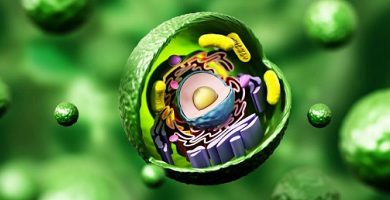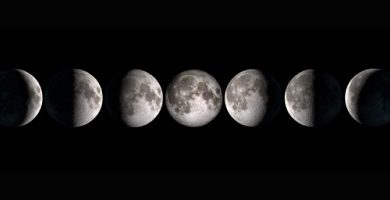What are quarks?
We explain what quarks are, how they were discovered and what the quarks model is. In addition, other subatomic particles.
-
What are quarks?
Quarks or quarks are a type of elementary subatomic particle , which falls into the category of fermions , and whose strong interactions constitute the matter of atomic nuclei. Its name comes from the novel Finnegan’s Wake by the Irish author James Joyce.
In other words, quarks are the particles from which protons and neutrons are made , as well as other types of tiny particles called hadrons.
These terms can be confusing, but it is not necessary to understand them at such technical levels to know what a quark is: the tiniest particles of matter , which interact freely with the four elementary physical forces: gravitational force, electromagnetic force, strong nuclear force and weak nuclear force
Together with leptons, quarks are the very bricks of matter. In the same way that matter and antimatter exist, there are also quarks and antiquarks.
In addition, there are six types or “flavors” of quark. Thus all the mesons and barions of matter can be constructed, that is, more than 200 different subatomic particles, by combining three different quarks (or antiquarks), joined by strong interactions.
-
Discovery of quarks
For many decades it was assumed that protons, neutrons and electrons were the fundamental particles of matter, that is, nothing could exist smaller than them.
However, the study of the so-called nucleons (neutrons and protons, inhabitants of the nucleus of the atom) showed that their size was much larger than that of electrons, and that this could mean that they would be shaped in turn by something smaller and simpler. The quarks came to answer that question.
Simultaneously, they were proposed in 1964 by Murray Gell-Mann and George Zweig , although totally independent. These scientists noted the need for quarks to exist due to the nature of the strong interaction between atomic nucleus particles.
In addition, many of its properties were inexplicable unless there are internal structures within protons and neutrons. Thus, the existence of three smaller particles was proposed, called quorks (later quarks , although Zweig initially proposed the name aces or “aces”), which would have a partial electrical charge of 1/3 and 2/3 of charge.
This hypothesis was tested experimentally at SLAC ( Stanford Linear Accelerator Center or “ Stanford Linear Accelerator Center ) in subsequent years. But the experiment pointed out that there were not three but six particles that could make up protons and neutrons. For this discovery, Taylor, Kendall and Friedman won in 1990 the Nobel Prize in Physics .
-
Quarks model

Within the standard model of matter that we handle today, quarks occupy the simplest place of matter.
Depending on the type of quarks we combine, we can obtain various types of particles, according to the hadron classification rule (the so-called “quarks model”), which establishes six different types of quark (or flavors , “flavors”), each one endowed with a “quantum number” that defines its electric charge:
- Up ( up ) . Equipped with an isospin +1/2 as a quantum number.
- Down ( down ) . Equipped with an isospin -1/2 as a quantum number.
- Charm ( charm ) . Endowed with a +1 charm as a quantum number.
- Strange ( strange ) . Endowed with a strangeness -1 as a quantum number.
- Top ( top ) or truth ( truth ) . Equipped with a superiority ( topness ) +1.
- Background ( bottom ) or beauty ( beauty ) . Equipped with an inferiority ( bottomness ) -1.
All this may look very strange and seem like something out of a video game, but it makes sense within the quarks model, if we think that these tiny particles come together in triplets or triads to form different types of larger subatomic particles.
When the sum of their charges gives whole numbers, they form hadrons. On the contrary, when the sum gives fractions they form other types of particles.
To this we should add, however, that quarks can have three more types of cargo, which is “color . ” It is not really about color, however, but that is the name that scientists gave to this property that is a type of affinity, responsible for strong nuclear attraction (by another particle called “gluons”).
These colors can be blue, green or red, and it is what distinguishes, for example, the neutrons and protons of electrons (lepton-like particles), since the latter are not made of quarks, and do not feel the nuclear interaction strong but weak.
According to this model, the fundamental particles of matter are quarks and leptons .
-
Other subatomic particles
Other types of subatomic particles are:
- Fermions . Together with bosons, they are the fundamental particles of matter, characterized by having a spin or semi-integral angular momentum (1/2, 3/2, etc.). There are only two types of fermions: quarks and leptons
- Leptons . Leptons are a type of fermion, endowed with ½ spin (either + or -) and that do not experience, unlike quarks, the strong nuclear interaction of matter. There are six types of leptons: electrons, muons, taus, electronic neutrinos, muonic neutrinos and tau neutrinos. The first three have electric charge +1 or -1, and the rest charge 0.
- Bosons . Together with fermions, they are the fundamental particles of matter, characterized by having a whole spin (0, 1, 2, etc.) and do not comply with Pauli’s exclusion principle. Examples of bosons are photons, gluons or gravitons, that is, particles that involve known forces.
- Mesons . These are bosons, that is, whole orron spin hadrons, which respond to strong nuclear interaction, so they are made of quarks, according to the quark-antiquark state.
- Baryons . They are composed of three quarks, and their most representative examples are the neutron and the proton, although there are also other, very unstable types.





